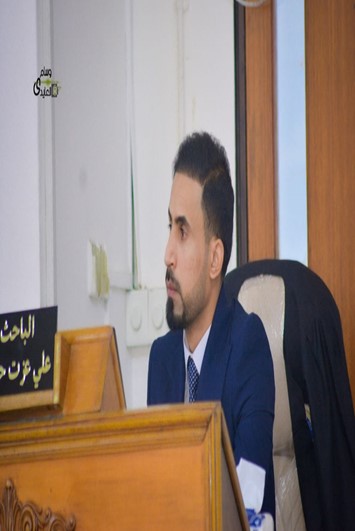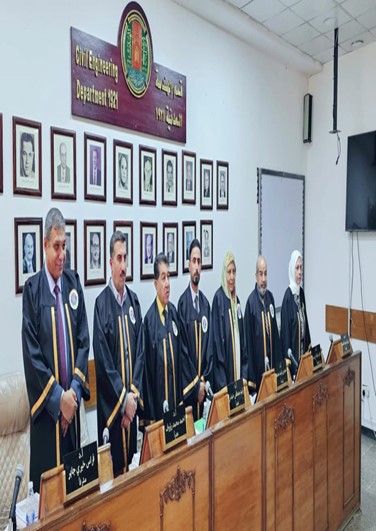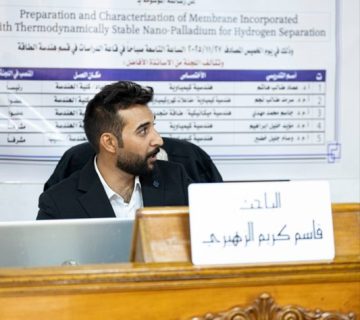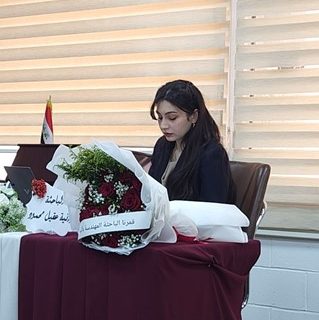The College of Engineering at the University of Baghdad witnessed the public discussion and defense of the doctorate’s thesis by student Ali Ezzat Hasan from the Department of Civil Engineering. His dissertation is titled “Building Decision-Making Model for Flexible Pavement Maintenance.” The defense took place on Monday, September 30, 2024, in the Professor Dr. Khaled Shaker Hall, Department of Civil Engineering, under the supervision of Prof. Dr. Firas Khairy Jaber.
The aim of the research was to build a model for determining road maintenance priorities by integrating three MCDM techniques, namely Fuzzy Delphi, Fuzzy Best – Worst, and Fuzzy VIKOR, to help decision makers evaluate and rank alternatives based on selected maintenance criteria in an ambiguous environment. Three decision support tools were developed using Matlab as a decision-making aid. A case study was conducted that took into account 34 criteria with six road alternatives. The first stage in determining road maintenance priorities within the region is to identify the main maintenance criteria based on the actual condition of each road, as keeping inappropriate and unimportant criteria and deleting the most important criteria leads to inaccurate and unreliable decisions. To achieve this goal, a group of 13 decision makers were selected to evaluate a list of 34 criteria for urban road maintenance using the fuzzy Delphi approach. These criteria were organized into seven groups based on their relative importance. These groups are (road condition, traffic volume, land use, urban, economic, demographic/community, and institutional). The second stage of the decision making process is to determine the weights of the criteria by applying the proposed fuzzy best-worst method (the developed fuzzy best-worst tool). The final step in the proposed fuzzy decision making model is to rank the road alternatives. In this decision making stage, the six road projects (alternatives) (R1, R2, R3, R4, R5, R6) are evaluated by a decision maker according to the 20 criteria obtained from step 2 (derive the weights of the criteria). The results of the study indicated that “Road Condition” is the most important criterion in maintenance with a weight of 0.2527 and “Economic” and “Urban” are ranked second and third in importance with weights of 0.14481 and 0.14031 respectively. Moreover, “Demographics/Community” is the least important criterion in road maintenance priority. In addition, the final ranking of roads was obtained using the proposed VIKOR method. Their participation helped the case study achieve its primary objective. A sensitivity analysis was conducted at the conclusion of the case study to demonstrate the strength and reliability of the results obtained, and an evaluation questionnaire was used in a live workshop session with road maintenance specialists to evaluate DSTs. It was determined that the proposed model has real advantages. Finally, suggestions for further studies were made.
After the scientific discussion and evaluation by the esteemed members of the defense committee, the researcher was awarded a doctorate’s degree in Civil Engineering / Construction Project Management.








